Community leaders from across the Tennessee Valley were given a "bird's eye view" of what growth means for Redstone Arsenal during a briefing from top Redstone officers Oct. 13.
That view was an overarching look at the Arsenal's footprint, its growing capabilities and new organizations, and the issues that could threaten future growth.
During the Evening at the Arsenal, Maj. Gen. Jim Myles, commander of Redstone Arsenal and the Aviation and Missile Command, joined forces with Col. Steve Kihara, the new commander of the Redstone Test Center, and Garrison commander Col. Bob Pastorelli to share Redstone Arsenal's story with more than 100 community leaders. The Arsenal story included a missile firing of the Javelin, a flyover of Chinook and Black Hawk helicopters, and dinner, exhibits and a presentation at the Redstone Test Center's hangar at the Airfield.
"This is an Arsenal that supports the entire country ... The mission of success today is having you get a better feel for your Arsenal and having you get a better feel of what we're all about, what our challenges are and where we're at," Myles told his audience. "Welcome to your Army."
"We're here for you," added Pastorelli. "This is our opportunity to show you what's going on, particularly in the test arena."
Once all the recommendations of the 2005 Base Realignment and Closure Commission are in place, the Arsenal will be home to several new government agencies, including the 1,200-employee Redstone Test Center, responsible for testing the Army's missiles, aviation systems and sensors.
Four hundred of those employees will be moving from Fort Rucker to the Arsenal in the ongoing merger of the Arsenal's Redstone Technical Test Center and Fort Rucker's Aviation Technical Test Center. The merger will bring to the Arsenal an additional 40 aircraft as part of its aviation test program by the end of the summer 2010.
"This area is not used to hearing the level of aviation assets we're bringing here," Kihara told the community leaders in his first local speaking engagement since taking over command of RTC.
The Arsenal's testing role is critical "to get weapon systems in the hands of war fighters as quickly as we can and that work the first time, every time. Is it noisy' Yes. Is it windy' Yes. Do we put helicopters down in fields' Sometimes, yes, because a ground problem is better than an air problem," Kihara continued.
Reviewing the Arsenal's flight test airspace, Kihara said citizens in the Tennessee Valley will see more and more helicopters in the air, flying over populated areas at 1,000 feet or higher. He assured community leaders that all safety precautions are exercised during these test flights.
"To avoid potential damage and loss to the ground, there may be precautionary type landings," Kihara said. "Helicopters are complex and include a lot of systems. (If there is any kind of problem pilots will) put it on the ground, and let maintenance sort it out and take care of it."
Each Army aircraft costs $30 million to $50 million to build. To fly that aircraft for just one hour involves 25 to 30 hours of ground work. It is "not acceptable" to hot rod and destroy a military aircraft as depicted in "right stuff" Hollywood movies, Kihara assured his audience.
"It's safer to do an experimental test flight" than it is to fly commercial, he said. "The airspace is controlled. The vehicle is controlled. The ground telemetry is controlled. The risk is controlled ... There are hundreds of people monitoring the safety and health of our aircraft."
Kihara urged community leaders to encourage public support of Army aircraft testing in the airspace above the Tennessee Valley.
"We need true support from the local community because what we do today directly influences the battle tomorrow," he said. "On behalf of the America's sons and daughters, we appreciate your support."
Myles reiterated Kihara's request, saying America has "great Soldiers out there protecting you" from those who don't like the American way of life and who want to do harm to Americans on American soil.
Although aviation systems and the future growth of the Army aviation presence in the Tennessee Valley were the focus of Evening at the Arsenal, Myles also mentioned the various other programs that make Redstone Arsenal a heavy contributor to the war effort. He reviewed the Arsenal's local economic impact ($2.7 billion annual in salaries and 33,000 Arsenal employees), and the move to Redstone Arsenal of the Army Materiel Command and the Security Assistance Command, which is responsible for the Army's foreign military sales.
"It is humbling to come to work every single day and see what we're doing here. Our work puts us 30 miles outside Bagram, Afghanistan," he said.
The Arsenal mission includes several facets, including ballistic missile defense, space operations, research and development, manning the force, test and evaluation, homeland defense and intelligence, logistics and acquisition, recruiting, foreign military sales, and the missions of the FBI and ATF.
"The DNA of this Arsenal is changing," Myles said, adding that AMC will bring to Redstone and Alabama its first four-star general.
"There is no Arsenal, there is no military base, there is no commercial base in our country that has the capability of defending our nation like Redstone Arsenal. It is an incredible statement of belief and confidence to give us the capability that we have and then expand it."
He also spoke of the Arsenal's local concerns - roads, schools, work force and medical services.
Local leaders "all get it, they understand," Myles said. "This community has come together to establish priorities to take down to (the state capital) Montgomery. They speak as one voice."
But, he warned, there is another BRAC round set for 2015 and the local community must be ready for it.
"There will always be another BRAC round," Myles said. "The question comes down to what is a community's capability to grow. That's the key (to future BRAC success) ... We must continue to stay ahead of the requirements our country is needing us to do."
Myles is confident that the Arsenal's work force will continue to sustain itself and be prepared for future growth and he is confident that community leaders will continue efforts to maintain the Tennessee Valley's reputation as a great place to live and work.
"From a simple Soldier, I thank you from the bottom of all our Soldiers' hearts," he said.
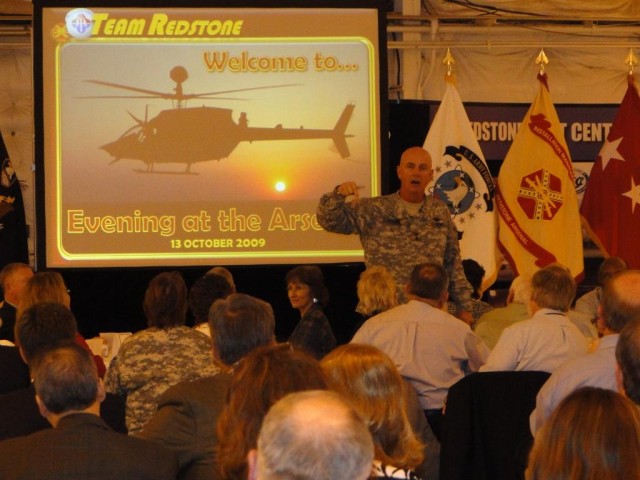
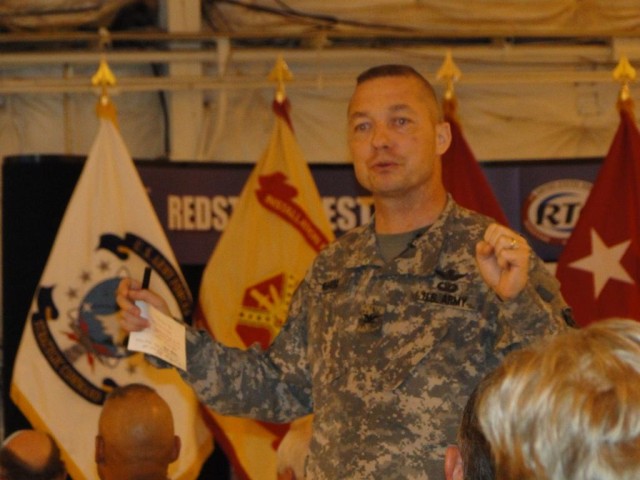
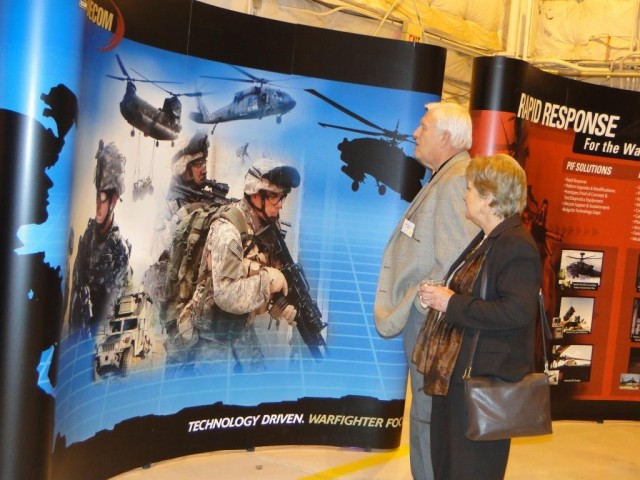
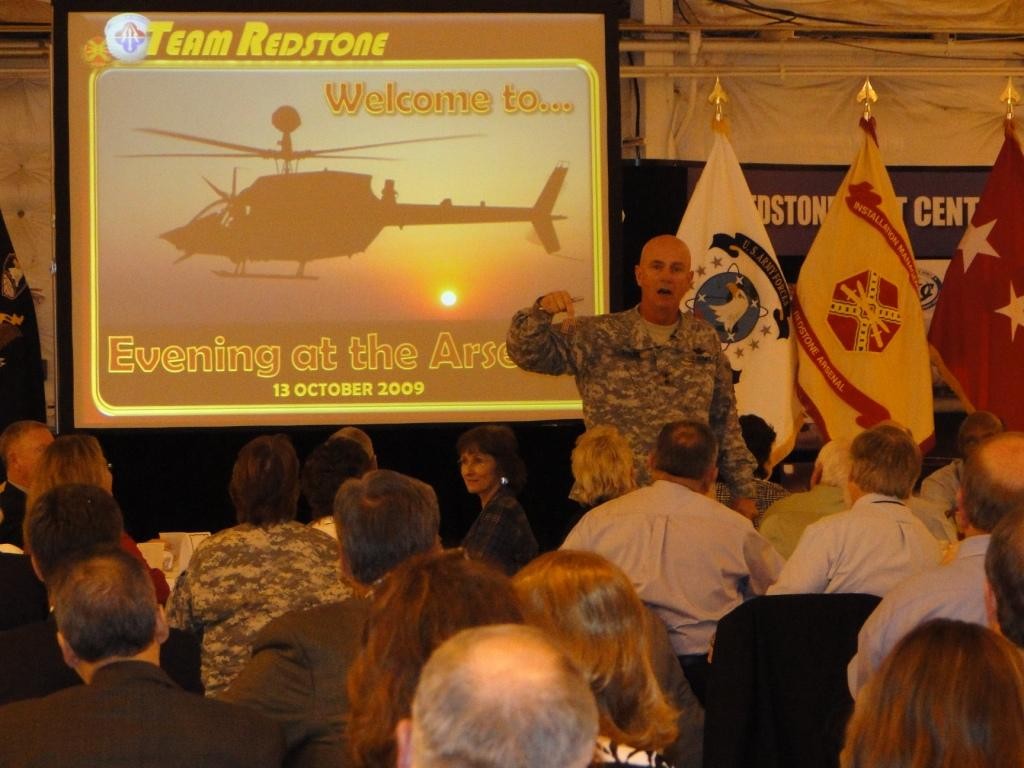
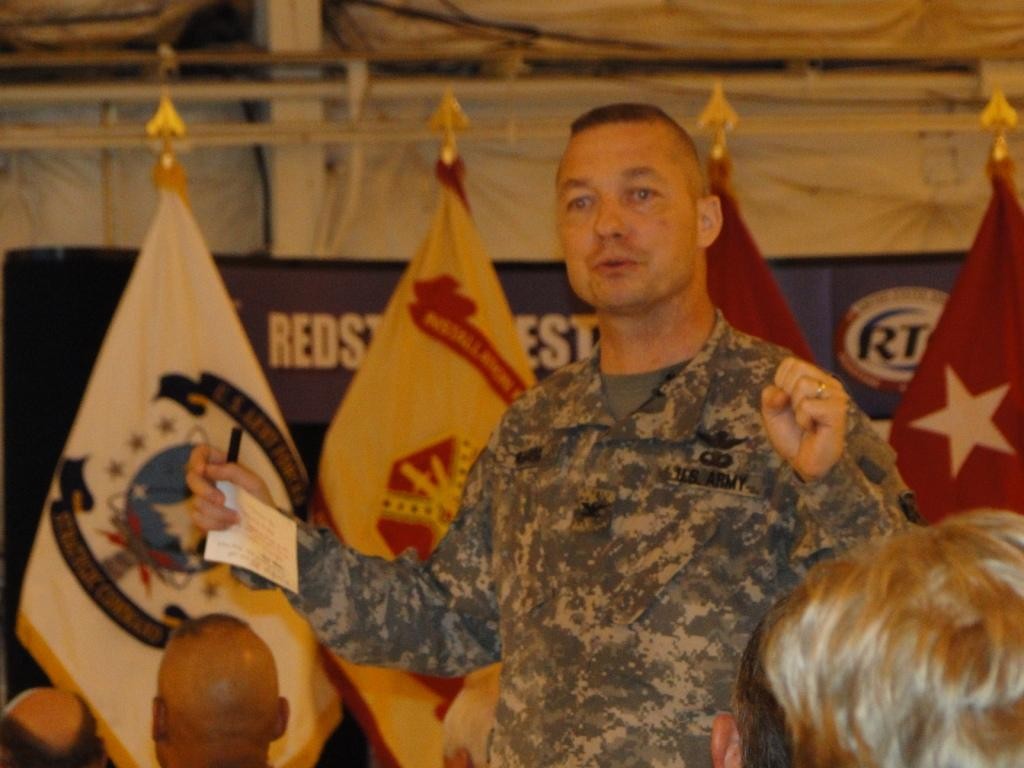
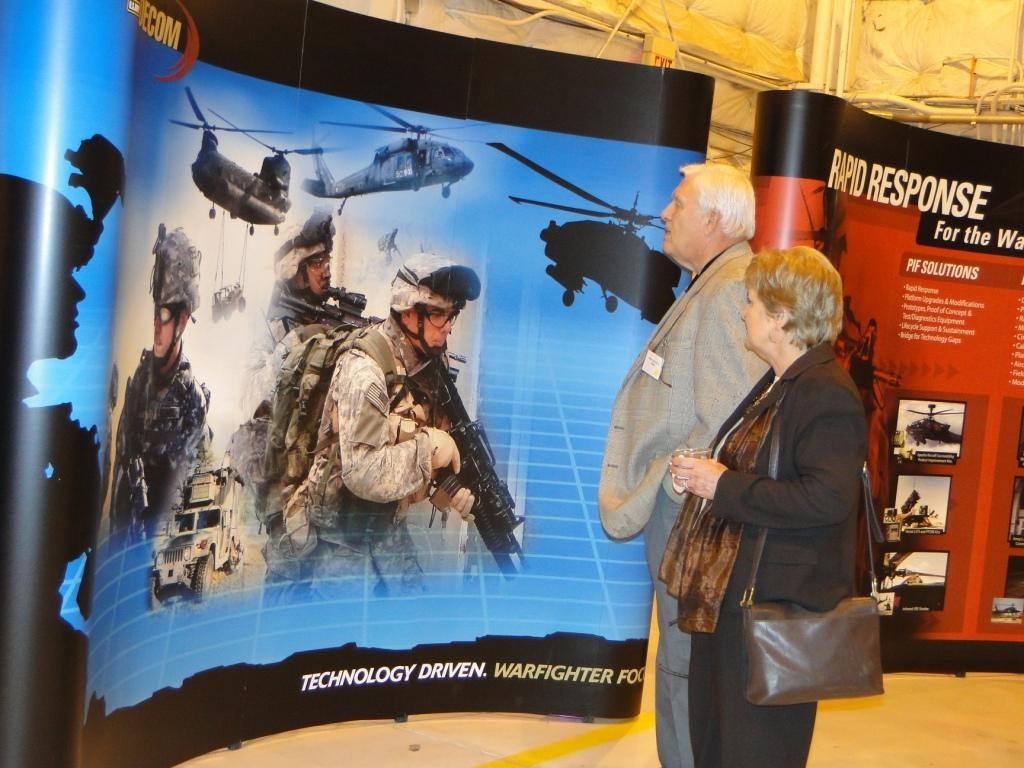
Social Sharing